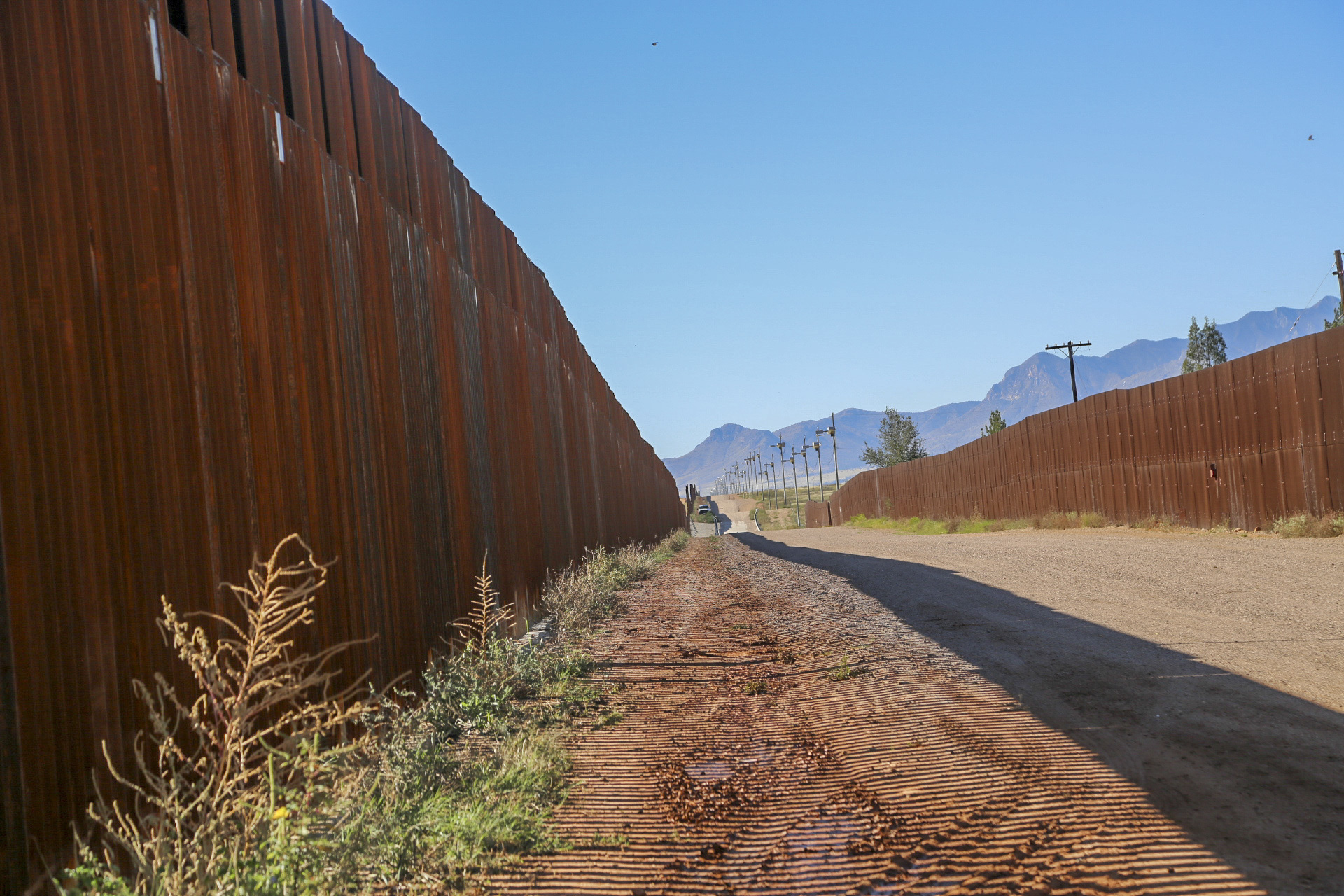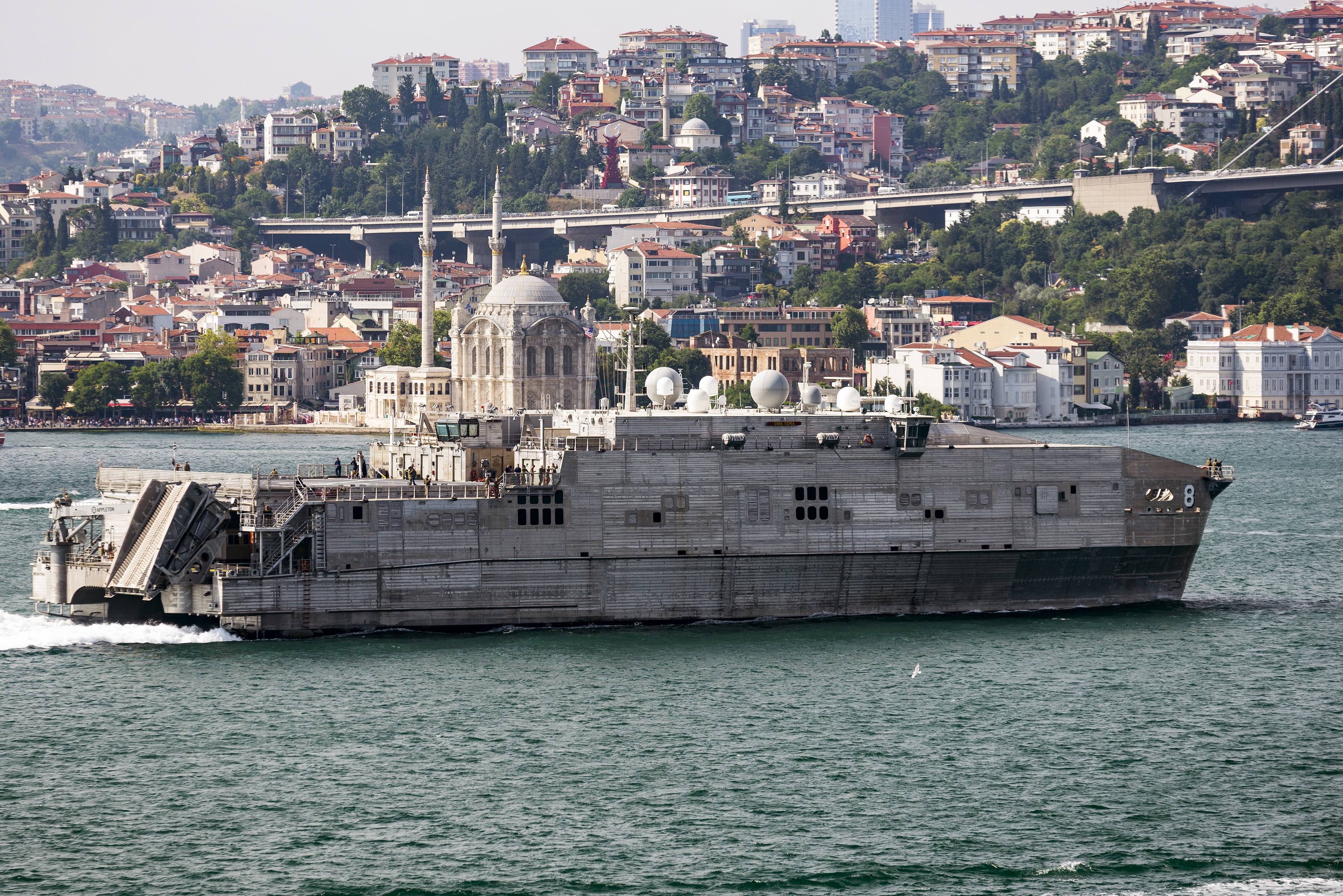
This post has been updated with statements from shipbuilder HII, the Office of the Secretary of Defense, HASC chairman Rep. Adam Smith (D-Wash.) and HASC ranking member Rep. Mac Thornberry (R-Texas).
Pentagon leaders want to reroute $1.5 billion in money from two major shipbuilding programs and aircraft for the Navy and Marine Corps to support construction of $3.8 billion in new physical barriers along the U.S.-Mexico border, according to a copy of a Fiscal Year 2020 reprogramming request obtained by USNI News.
According to the reprogramming request that hit the Hill today, the Department of Defense would move the money from the military services to the Department of Homeland Security’s counter-drug activities.
“DHS had identified areas along the southern border of the United States that are being used by individuals, groups and transnational crime organizations as drug smuggling corridors and determined that the construction of additional physical barriers and roads in the vicinity of the United States border is necessary in order to impede and deny drug smuggling activities,” reads the request signed by acting DoD comptroller Elaine McCusker.
The DoD justified its move in a Thursday afternoon statement.
“The Department of Defense is committed to supporting the Department of Homeland Security’s efforts to secure the southern border by constructing fences and roads and installing lighting to block drug smuggling corridors. Consistent with the President’s April 4, 2018, direction to the Secretary of Defense, DoD used its statutory authority to provide support that aids in blocking drug-smuggling corridors across international boundaries of the United States,” read the statement.
“Last month we received a new request from the Department of Homeland Security asking for assistance in blocking drug-smuggling corridors on Federal land along the southern border of the United States. In response, the Secretary of Defense authorized support of $3.8 billion to build approximately 177 miles of fencing that will help to protect our borders. We will continue to support DHS and other agencies as needed to keep our homeland is secure.”
The request, in two parts, asks for $2.2 billion to be reprogrammed from defense appropriations for vehicles and weapons and another $1.63 billion from the Pentagon’s Overseas Contingency Operations fund.
Of the $2.2 billion in the first part of the request, the Navy pays the lion’s share, with the request asking for $1.5 billion coming from shipbuilding and Navy and Marine Corps aircraft.
Specifically in naval aviation, the sea services would lose two F-35B Lighting II Joint Strike Fighters for $233 million, two V-22 Osprey tilt-rotor aircraft for $155 million and one P-8A anti-submarine warfare aircraft for $180 million.
From the shipbuilding account, the Navy would lose $650 million in early procurement for the yet-to-be-named amphibious assault ship LHA-9 and $261 million for a new Spearhead-class Expeditionary Fast Transport ship.
The cuts are all labeled in the document as “congressional special interest items” and are defined as either excess to requirements or early to need. They do, though, support priorities laid out in the National Defense Strategy and in the Navy’s Distributed Maritime Operations concept for fighting against peer adversaries like China.
In a statement, House Armed Services Committee chair Rep. Adam Smith (D-Wash.) lashed out at the move.
“The Trump Administration claims that every military decision they make is in support of the National Defense Strategy, and that their primary focus is the great power competition with Russia and China. But their policy simply does not match their rhetoric. Rather than investing in the procurement of critical platforms, this administration would rather dump another $3.8 billion into a wall on our southern border,” the statement read.
“It is clear to me, and anyone with experience in national security policy, that a wall on our southern border will do nothing to support our strategic advantage over Russia and China, support counterterrorism, address rogue states, or enhance relations with partners and allies.”
LHA-9 shipbuilder Huntington Ingalls Industries responded to the prosed cut in a statement.
“We remain committed to building ships for the nation in the most efficient and affordable way and to building LHA-9 in a manner that best leverages our hot production line and our suppliers in 47 states,” the statement said.
“We look forward to working with the Congress as the budget cycle progresses.”
In contrast to the Navy cuts, $861 million was requested rerouted from Air Force programs – four C-130Js, eight MQ-9 Reaper unmanned aerial vehicles, F-35 advanced procurement and the OA-X light attack aircraft. The Army would lose $200 million for National Guard Humvee modernization and $100 million from a service program of the Army’s fleet of Heavy Expanded Mobility Tactical Trucks.
An additional $1.3 billion would come out of National Guard and reserve equipment.
A message left with a Pentagon spokesperson as to why the Department of the Navy had a disproportionate share of the burden was acknowledged but not immediately returned.
Other congressional defense leaders were critical of the request shortly after it was delivered to the Hill.

“The re-programming announced today is contrary to Congress’s constitutional authority, and I believe that it requires Congress to take action. I will be working with my colleagues to determine the appropriate steps to take,” House Armed Services Committee ranking member Rep. Mac Thornberry (R-Texas) said in a Thursday afternoon statement. “The wall should be funded, but the funding must come through the Department of Homeland Security rather than diverting critical military resources that are needed and in law.”
The proposal followed the reveal of the Navy’s proposed the Fiscal Year 2021 budget in which the service requested the smallest shipbuilding budget since sequestration.
“The request includes just $19.9 billion for eight ships, which falls about $4 billion and four ships short of the FY 2020 ship procurement. The last time lawmakers approved a shipbuilding plan of only eight ships was FY 2015, when sequestration spending caps loomed over the budgeting process,” USNI News wrote on Monday.
The Thursday request follows a similar September reprogramming that took $3.6 billion from military construction projects to fund border barriers with Mexico.
Those included $26.1 million for a new ship maintenance facility and $22.5 million for a hazardous materials warehouse at Norfolk Naval Shipyard, Va.; $88.9 million for a submarine pier and maintenance facility at Naval Base Kitsap-Bangor, Wash.; and $9.08 million for a replacement to the working dog treatment facility at Naval Station Guantanamo, Cuba.
Thornberry on Wednesday, just ahead of the release of the reprogramming request, expressed concern about the White House using that strategy of taking military construction funds away to support the activities at the border, saying, “there are real needs out there in MILCON.”





